NIL
Utah State transfer portal player breakdown — Zach Keller
Utah State lost its starting center – the 6-foot-11 Aubin Gateretse – to graduation this offseason and needed to find some size to replace him. Former Utes forward Zach Keller, standing 6-foot-10, is a solid candidate to do the replacing. But a similarity in size is about all Keller shares with the man whose role […]
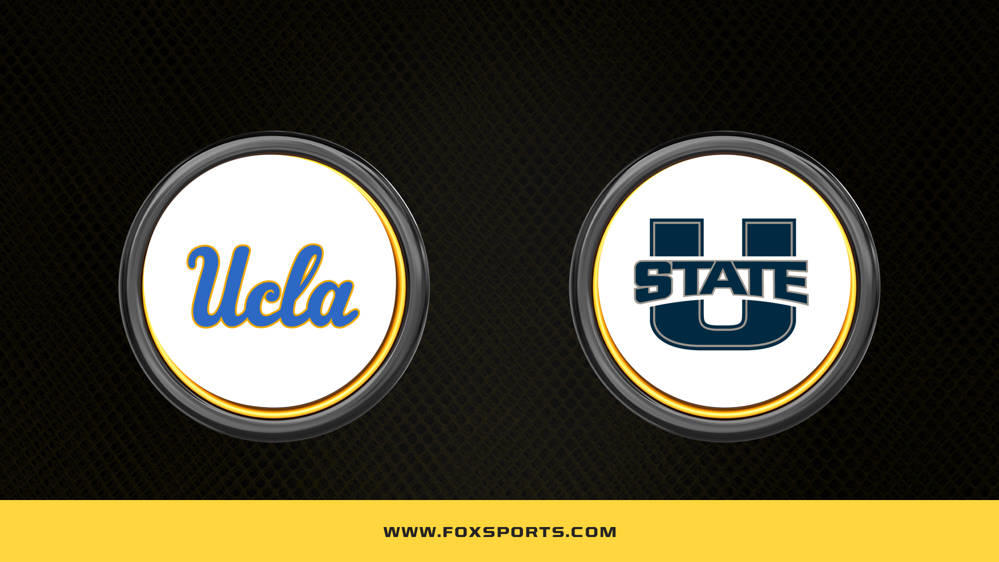
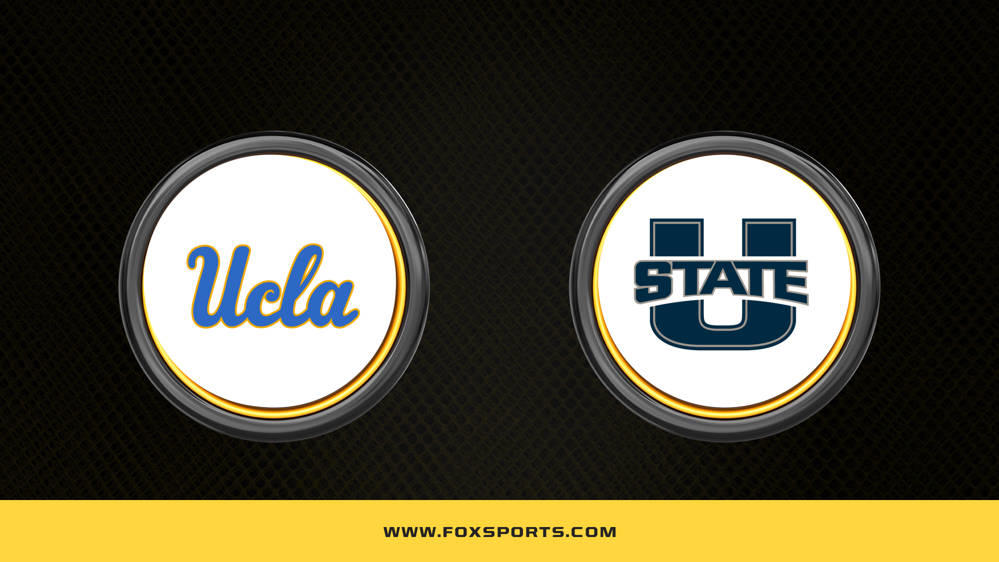

Utah State lost its starting center – the 6-foot-11 Aubin Gateretse – to graduation this offseason and needed to find some size to replace him. Former Utes forward Zach Keller, standing 6-foot-10, is a solid candidate to do the replacing. But a similarity in size is about all Keller shares with the man whose role he’ll try to fill as Keller will bring a much different skillset than the rim-running/rim-protecting Gateretse did. Jerrod Calhoun landed a stretch big with Keller who’s gone toe-to-toe with some of the best teams in the country across three seasons in the ACC and Big 12.
Keller’s experience in some of the best conferences in the country is something Calhoun was quick to point out in the press release announcing Keller’s signing. But more important to this breakdown will be what skills he brings to the table, something else Calhoun touched on.
“Zach’s skill set fits our style of play perfectly, as a player who can be impactful both inside and out,” Calhoun said. “We look forward to seeing Zach thrive in our system.”
So let’s go through how that skill set fits the Aggies style and what to look out for with Keller’s game. There some great stuff, and some things he’ll need to work on, but Keller should be a good addition to Utah State’s roster.
A note on source for stats in this piece. Basic averages (points, rebounds, etc.) come from Sports Reference, as do the advanced stats of Win Shares and Box Plus/Minus. Bayesian Performance Rating comes from EvanMiya.com as does any lineup data used. All stats referencing specific shot types (i.e. shots at rim or jump shots) along with play-specific shot attempts (such as post-ups or spot-up shooting) come from Synergy Sports.
Biographical Info
- Height: 6’10”
- Weight: 235 lbs
- Class: Senior (1 year of eligibility)
- Hometown: Highland Ranch, CO
- High School: ThunderRidge
- Previous Colleges: Wake Forest (2022-23 & 2023-24), Utah (2024-25)
Keller was a pretty promising recruit coming out of high school in Colorado. He was a McDonalds All-American and the top-ranked recruit in the state, easily projected as a future starter for a high-major school. Wake Forest landed the young forward and he saw sparing minutes in 17 appearances as a true freshman. In his second season with the Demon Deacons, Keller got a glimpse of being a full-time player. Early in the season, injuries and eligibility issues among his frontcourt teammates led to him starting eight games over the course of about a month. He didn’t play major minutes, but in 19.5 minutes per game he averaged 4.0 points and 3.9 rebounds. That run ended when teammate Elfton Reid was granted eligibility to play and Keller’s minutes tanked, going from nearly 20 a game down to just eight the rest of the season.
At Utah, Keller’s minutes didn’t really improve all that much, though a preseason injury may very well have contributed to his fall in the rotation. Keller only missed three games, but missed a chance to become a frontcourt staple with fellow transfer Ezra Ausar earning the other starting forward spot instead. The most minutes Keller played in a game all season was just 17, in a blowout loss to Texas Tech.
Statistics
Zach Keller Career Per-Game Averages
| Season | Team | GP / GS | Points | Rebounds | Assists | Steals | Blocks | FG% | 3P% |
|---|---|---|---|---|---|---|---|---|---|
| 2022-23 | Wake Forest | 17 / 6 | 2.3 | 1.5 | 0.2 | 0.4 | 0.1 | 36.1 | 20.0 |
| 2023-24 | Wake Forest | 27 / 8 | 1.6 | 2.0 | 0.1 | 0.3 | 0.4 | 34.8 | 29.2 |
| 2024-25 | Utah | 28 / 0 | 2.8 | 1.4 | 0.6 | 0.2 | 0.0 | 56.4 | 40.0 |
Here’s a summary of King’s advanced catch-all metrics, with context of his rank within his team, Utah, and his conference (Big 12).
- Box Plus/Minus (BPM): -0.7 (11th on team / 130th in Big 12)
- Offensive BPM: -1.4 (11th / 124th)
- Defensive BPM: 0.7 (11th / 133rd)
- Win Shares (WS): 0.6 (10th / 127th)
- Offensive WS: 0.3 (10th / 113th)
- Defensive WS: 0.3 (11th / 135th)
- WS per 40 Minutes: 0.085 (11th / 102nd)
- Bayesian Performance Rating (BPR): 0.31 (10th / 133rd)
- Offensive BPR: -0.50 (10th / 137th)
- Defensive BPR: 0.81 (6th / 104th)
Strengths
- Smooth jump shot
- Size and athleticism to play both PF and C
- Good touch around the basket
- Defends well against physical bigs in the post
Weaknesses
- Poor rebounder
- Consistently struggles in pick-and-roll defense
- Inconsistent in perimeter defense against guards or bigs
Scouting Report
After a season where Calhoun lamented a lack of scoring punch from his frontcourt, the Aggies have landed another big man that can put the ball in the bucket, though in different ways than some of his peers in the USU locker room. Keller has the makings of being a very skilled big, one that has great touch around the rim, catches the ball very well (even in traffic), can step out and shoot the three and even put the ball on the floor and attack the closeout. Finding all of those skills in a 6-foot-10 college big can be a difficult task, but it’s one Calhoun seems to have pulled off.
Keller has showcased three types of scoring that he can be highly effective at. In no particular order, those three are 1) Scoring as the roll man in the pick-and-roll, 2) Getting to the dunker’s spot and finishing after getting drop-off passes and 3) Stepping outside the arc and hitting 3-pointers.
Starting with the first of those, it’s really easy to spot the skill Keller possesses, even at his size, when seeing how he moves and makes plays in the pick-and-roll. When either setting a hard screen or slipping the screen, he’s able to quickly turn and catch the ball. But he’s capable of doing more than being a lob threat. Plenty of times when Keller got the pass out of the pick-and-roll, he still had some work to do and was able to dance around defenders and finish strong a the rim and with a buttery-smooth touch.
His roll man duties flowed right alongside his work as a cutting big, and he found a decent amount of offense in finding an opening in the defense where he could receive an easy pass and either throw down a dunk or finish a layup around a too-late challenge.
Keller can pair this skilled scoring in the lane with the ability to hit shots from the outside. His jump shot is very solid with a good release and fluid motion.
A minor hesitation on this 3-point shooting is that his percentages are a tad questionable despite how good the shooting form looks. His career percentage on 3-pointers in college sits at just 28.8 percent (including high school it’s 29.3), though it’s been steadily moving up. As a freshman he hit just 20 percent in sparing minutes but then upped it to 29.2 percent as a sophomore — with an important note that in his eight starts in 2023-24, the only time he got decent playing time, he shot 35.3 — and then shot an even 40 percent as a junior at Utah last year. The trend, at least as an optimist will hope, is that Keller is not only improving but he clearly shoots better when he’s given some time to get in the flow of the game.
Something Keller has not showcased in his career is post scoring. Synergy tracking credits him with nine career post-up possessions. Total. Even in what will surely be an increased role at Utah State, Keller’s rate of post-up scoring attempts is not likely to see a drastic increase. He may get a look in the post here or there, especially if he gets switched onto a guard, but the post is not going to be a place where Keller gets a notable amount of his points or looks. It’s just not in his bag of tricks.
Turning to some of the weaknesses of his game, one of the biggest concerns for Keller is his rebounding. For starters, his rebounding percentage of 7.8 is not so much a red flag as it is a tornado siren. Last year there were only 12 players listed at 6-foot-10 or taller who had a rebounding percentage under 8.0. And the film very much backs this up. It’s hard (though not impossible) to find an instance where Keller wins a contested rebound or creates a rebounding opportunity for himself or his team. His instincts for when to jump and where to be for box-outs is lackluster at best and it really works against his impact on the court. In four games where I was specifically tracking his rebounding efforts, there were no less than 13 cases where Keller had a pretty reasonable (or better) shot at getting a rebound and failed to do so.
This fact about Keller’s game has to change when he comes to play in Logan. The Aggies already had a bit of an issue with size, physicality and rebounding last year and Keller will be the tallest and potentially the bulkiest player on the team. Garry Clark and Karson Templin are the only other veteran bigs on the roster and they can’t carry the rebounding weight all by themselves (though maybe incoming freshman David Iweze can pick up some of the slack as well). If Keller isn’t physical on the glass and fighting hard for rebounds, or at least boxing out at a high level to let wings and guards pick up the board, it’s going to be a long season for the Aggies.
Another aspect that features a lot of red flags is Keller’s defense. There’s a few particular areas, but most of them involve times where Keller has to venture out onto the perimeter. The footwork and athleticism he shows on offense translates somewhat well to his defense out near the 3-point arc, but things just don’t seem to come together enough for Keller to be an impactful player. Most concerning is how he handles pick-and-roll defense. Whether team defensive schemes called for him to hedge the guard or play drop coverage, Keller struggled regardless. He’s not a natural rim/paint protector, which made his drop coverage less-than-stellar. And while he should be athletic enough to hedge, so many times he didn’t pull it off, leading to an easy dump-off pass and an easy score.
To put it bluntly, if there’s one area that Keller has to improve in to be a good player at Utah State, it’s his pick-and-roll defense. Even in the context of his rebounding struggles. The biggest hope is that the matchup zone scheme clicks with Keller and its pick-and-roll coverage principles fit better with his skills and mindset (check in later in this article as we’ll dive into some clips of his pick-and-roll defense with Utah and Wake Forest vs what it’ll look like at USU).
One area of defense where there isn’t as much concern is when he goes one-on-one in the post. Keller did a bit more in terms of post defense when he was at Wake Forest, but there are a few cases of him bodying up guys while at Utah. I’ve put together around a dozen clips, both the good and not-so-good, which will give you an idea of his overall post defense.
It’s worth noting some of the guys Keller went toe-to-toe with and won on multiple occasions. You have All-American forward JT Toppin whom he stonewalled twice into less-than-ideal post shots. There’s also Lynn Kidd (with Virginia Tech in those clips) who ranked 16th in the nation in post-up efficiency (min 100 post-ups) in the year in which Keller faced him. These were no scrubs that Keller stood up to. Now, it wasn’t all sunshine and daisies as he got punked in a couple of those clips, but by and large, Keller made it tough on post scorers. The main points of improvement for him will be to work on not yielding as much real estate in the post and having better balance and footwork to defend against finesse moves, which is something he clearly struggled with a bit more than those going for raw power.
Fit with Utah State
Keller’s role with Utah State will, by necessity, be pretty big. With the final addition to the roster made late last week, the Aggies will be carrying just four players who can be classified as bigs (i.e. centers and more traditional power forwards). Those four being Keller himself, along with Garry Clark, Karson Templin and the incoming freshman David Iweze. That’s a pretty thin frontcourt numbers wise. Keller will have to perform or the Aggies will end up relying on a true freshman for significant production (which may not be a bad thing, it’s just a risky endeavor).
As promised, let’s call back to Keller’s pick-and-roll defense and look at how he can try and improve that within Utah State’s scheme. I mentioned his struggles in both of the most common ways in which teams choose to deal with high pick and roll. First, we have the hedge, where the big comes above the screen to keep the ball-handler from going anywhere. In an ideal world, this gives the trailing guard to get back to his man and backside help from the defense gives the hedging big time to recover to the man he left alone in the paint. But, as in this clip, Keller gets it wrong by not reacting quick enough and truly hedging the guard, making it easier for the pass to the big.
The second major type of coverage is drop coverage. Keller had his struggles in these cases, but a bit more successful. It requires a bit more balancing as the dropping big has to fend off a drive while also not straying too far from the rolling big. This next clip also featured a failure, but it wasn’t as much on Keller since the trailing defending guard could maybe have done a bit more to deny the pass back to the big. Keller deterred the shot from the guard and can’t be everywhere.
Utah State’s pick-and-roll coverage, which Keller will now have to learn, is a bit of an in-between of these two. The big will kind of hedge the ball-handler, but doesn’t jump all the way outside to directly impede and/or double-team the guard, but it also isn’t true drop coverage. Slappin’ Glass referred to it as a “lateral hedge.”
It’s hard to say without seeing him try it, but there’s a decent chance this is a system that could help shield Keller from his own struggles in pick-and-roll defense. Something that also really helps is just how much the zone defense is built to not leave the big in no-man’s land as can very often happen to man defensive schemes in the pick-and-roll. The trailing guard quickly gets back to his man to let the big return to his mark, with the backside defense shifting over to deter any lob pass to the roll man. Keller will need some coaching and some significant work in this area, but it’s his chance to turn over a new leaf in this area of his game.
Shifting toward something more fun than sugar-coating a player’s weakness, I hinted at this in the breakdown of Kolby King. Keller has the chance to become a significant threat in the pick-and-pop game, especially if he ends up playing center a decent amount or shares the court with Garry Clark a lot. Utah State has several players who can be threats going downhill, Mason Falslev, Kolby King, Drake Allen and MJ Collins, and using ball screens to create opportunities for those guys to get downhill is common. When a big-man screens, he usually rolls to the rim and we’ve seen how Keller can excel there. But his 3-point shooting can create even more chaos as defending bigs usually don’t handle 3-point shooting bigs very well in these actions. Just look at Air Force trying and failing to account for Isaac Johnson in a simple pick-and-pop.
Beyond the obvious impact of being able to hit 3-pointers as a pick-and-pop center, there’s a knock-on effect this can have with teams that desperately don’t want to have their center leave the paint. Looking back on that same Air Force game you see how much the Falcons didn’t want 7-footer Wesley Celichowski to leave the paint. They ended up switching a smaller player onto Johnson to guard him on the perimeter. This allowed Celichowski to stay in the paint to deter shots at the rim without having to follow Johnson to the perimeter.
But this only works if the center can stick to a non-shooter, which is why the caveat about Keller playing center or being on the court with Clark (also a decent 3-point shooter) was made earlier. Because if you have five shooters on the court, you can do what Utah State did a couple of plays after the above clip. To facilitate keeping Celichowski in the paint, Air Force was switching the man guarding Dexter Akanno — in this next clip it was coincidently the future Aggie wing Luke Kearney — to guard Johnson. So when that switch occurred, the Aggies reversed the ball over to run a pick and roll with Akanno as the screener. Celichowski had nowhere to run at that point and it was an open 3-pointer for Akanno.
When you are able to throw out five-out lineups, you can drag opposing rim-protecting centers kicking and screaming onto the perimeter which in turn makes more room for guys like Falslev, King, Allen, Collins etc. Keller is a prime candidate to be a serious pick-and-pop threat if he’s able to shoot at least in the 34-35 percent rage from three. And he’s shown that capability at times in his career.
NIL
Kansas baseball commit Daniel Lopez passes on signing with Orioles, will play for Jayhawks in 2026
As the Baltimore Orioles continue to sign their 2025 MLB Draft picks, one deal is not going to get over the finish line. Odessa College pitcher Daniel Lopez was taken in the 12th round by Baltimore but instead will return to college for another season, he announced via social media on Thursday. Lopez will still […]

As the Baltimore Orioles continue to sign their 2025 MLB Draft picks, one deal is not going to get over the finish line. Odessa College pitcher Daniel Lopez was taken in the 12th round by Baltimore but instead will return to college for another season, he announced via social media on Thursday.
Lopez will still be playing baseball elsewhere next season. He committed to the Kansas Jayhawks as well, making a jump up to the power conference ranks. Huge news for head coach Dan Fitzgerald, snagging a top arm out of the NCAA transfer portal.
“After talking with my family and coaches, I’ve decided to return to school and continue my academic and athletic journey at the University of Kansas this season,” Lopez said via X. “Thank you to the Orioles and everyone who supported me. Grateful for what’s ahead! Let’s go to Omaha.”
Last year was considered Lopez’s freshman year, putting up good numbers for Odessa College. He appeared in 16 games, six of which were starts – all of which were in conference play. In 49.2 innings, Lopez recorded a 4.89 ERA with 81 strikeouts and 38 walks.
Playing for Kansas will be a big step up for him. D1 Baseball’s Kendall Rogers believes Lopez possesses a “big-time arm” and can be a “strong asset” for them moving forward. In an interview with KUSports.com, the right-hander revealed his fastball got up to 98 miles per hour.
“It’s kind of putting everything you can into baseball, making your life about baseball,” Lopez said of his mentality via KUSports.com. “I’ve always taken it serious, I’ve always loved the sport, the game, but as soon you get more into it, I feel like the culture was what really drove me at Odessa. It was kind of like a family, you know, everybody’s pushing you to be better.”
Kansas put together a successful 2025 season, making the NCAA Tournament for the first time in over a decade. As Lopez mentioned, the goal is to get to Omaha this upcoming year. If the Jayhawks can, it would be just the second time the program has gotten to the College World Series, going back to 1993.
In fact, KU has only once made it out of a regional. Any kind of advancement in the NCAA Tournament would be a major stepping stone. Lopez turning down the Orioles to play in Lawrence only helps their cause moving forward.
NIL
What to know about Donald Trump’s executive order on NIL and college sports
President Donald Trump on Thursday issued an executive order titled “SAVING COLLEGE SPORTS,” a directive aimed at regulating the rapidly shifting landscape in college sports. Since 2021, college athletes have been able to profit off their name, image and likeness after a Supreme Court ruling on antitrust laws went in favor of the athletes. In […]
President Donald Trump on Thursday issued an executive order titled “SAVING COLLEGE SPORTS,” a directive aimed at regulating the rapidly shifting landscape in college sports.
Since 2021, college athletes have been able to profit off their name, image and likeness after a Supreme Court ruling on antitrust laws went in favor of the athletes. In the ensuing years, players have been able to get paid legally via third parties, and after a separate lawsuit was settled in June, athletes can now also be paid directly by their schools.
The NIL era, however, has raised a variety of concerns for both schools and athletes, with issues ranging from maintaining equality in women’s sports to a potential push for collective bargaining between athletes and their respective colleges.
Trump’s order, which is not itself a law, essentially calls for an implementation of policies that are widely viewed as NCAA (as opposed to athlete) friendly.
Here’s what to know.
What exactly does Trump’s order call for?
Trump’s order said that, in the wake of legislation that allows athletes to be compensated and transfer freely between schools, “the future of college sports is under unprecedented threat.”
The EO goes on to say that the recent rulings have unleashed “a sea change that threatens the viability of college sports” and more guardrails are needed to ensure a fairer system.
So, what would Trump like to see? The order calls for the following:
- Prohibiting third parties from engaging in direct “pay-for-play” payments to athletes, which the order deems improper. Currently, school boosters can sign players to multimillion-dollar NIL deals that are widely viewed as a workaround to directly paying players to attend a certain university. Trump’s order says players should only earn “fair market value” for a legitimate service to a third party, such as a brand endorsement. Advocates for athletes say this would impose a cap on their earnings.
- Protections on scholarships for nonrevenue sports, requiring schools to maintain or increase scholarships for such sports, depending on the revenue of their athletic departments. This would be a measure largely to protect Olympic sports and women’s sports from potential decreases in funding as more money goes to revenue-generating athletes in football and basketball.
- A clarification from the National Labor Relations Board on the employment status of athletes “that will maximize the educational benefits and opportunities provided by higher education institutions through athletics.” During the Biden administration, the NLRB issued a memo stating that certain college athletes should be considered employees. That memo was rescinded earlier this year, and now Trump is seeking to codify athletes as non-employees, which would almost certainly take away any opportunity they have to collectively bargain with schools.
- Protections for the NCAA from lawsuits by athletes. The NCAA has been lobbying for these protections for many years, as many of the big changes in college athletics have come as the result of antitrust lawsuits. Protections against further court cases would allow the NCAA to enforce its rules on issues such as transfers and third-party payments without fear of them being upended by another court ruling.
What does this all mean for the immediate future?
Nothing immediately.
Trump cannot unilaterally impose rules in this scenario. His executive order also comes as the House tries to push through the SCORE Act, a bipartisan piece of legislation that is aligned with much of Trump’s executive order. The SCORE Act has moved through committee and can be debated on the House floor when representatives return from recess in September.
Meanwhile, there has been a bipartisan push in the Senate to introduce its version of legislation regarding college athletes, with Sen. Ted Cruz, R-Texas, and Sen. Cory Booker, D-N.J., among those involved.
“The many challenges facing college sports are important and complex,” Sen. Maria Cantwell, D-Wash., said in a statement to NBC News. “The Executive Order recognizes the importance of preserving Olympic sports, women’s sports, and maintaining competitiveness for big and small schools alike. I’m disappointed that the President abandoned his earlier plan for a commission to examine all the issues facing college sports. We need a sustainable future for college sports, not a future dominated by the biggest and wealthiest schools who can write their own rules without accountability.”
NIL
5
A little over a week ago, five-star linebacker Tyler Atkinson broke the hearts of Georgia fans when he announced his commitment to Texas over Georgia. No one saw this coming and many Georgia fans were left confused wondering how things changed so fast when Georgia was his leader for most of 2025. The consensus was […]

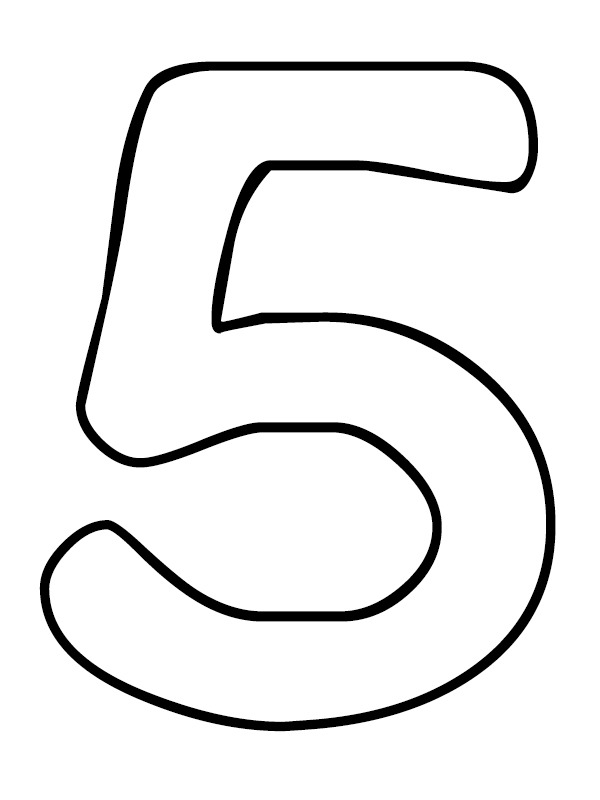
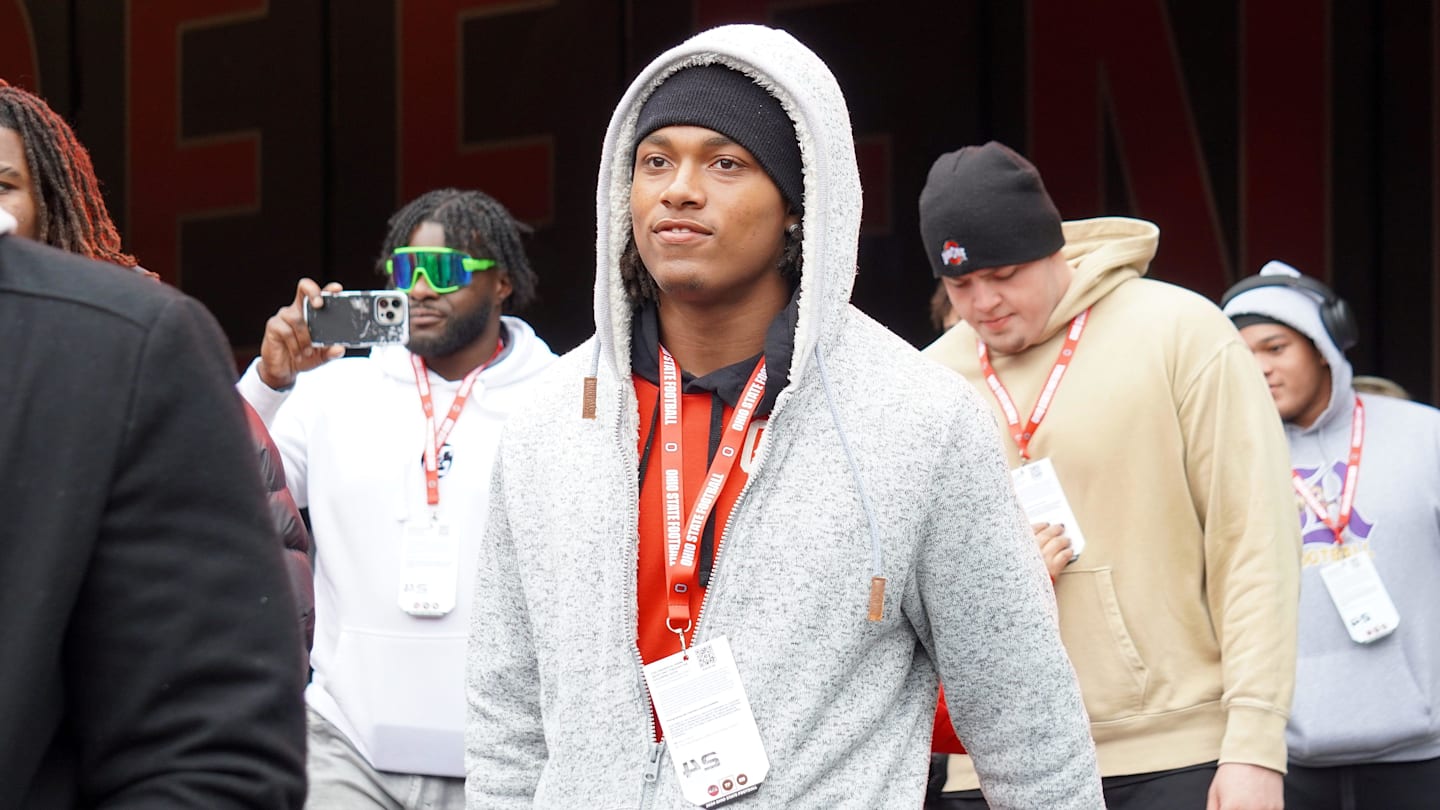
A little over a week ago, five-star linebacker Tyler Atkinson broke the hearts of Georgia fans when he announced his commitment to Texas over Georgia. No one saw this coming and many Georgia fans were left confused wondering how things changed so fast when Georgia was his leader for most of 2025.
The consensus was that Texas had to have offered Atkinson an amount of NIL money that he couldn’t say no to, and Friday night that was confirmed to be the case.
“Texas doubled Oregon and Georgia’s NIL offer to lock down Atkinson.”
Texas offered double the NIL money than #Georgia and Oregon to lock down 5-star LB Tyler Atkinson, per Keegan Pope. 😳
Atkinson’s recruitment ultimately came down to Georgia and Texas in the end. pic.twitter.com/ZWV3C96BB9
— Dawg Recruiting (@DawggRecruiting) July 26, 2025
Texas offered Tyler Atkinson twice the money Georgia did
Atkinson’s recruitment reportedly came down to Texas and Georgia. Clemson and Oregon were also named finalists for the No. 1 linebacker in the 2026 recruiting class as well, but everyone knew after Atkinson’s official visits that it was down to Texas and UGA.
There are a lot of good reasons why a recruit could commit to Texas, no one can deny that, but when it comes to linebackers Georgia is the best program in the country. During Kirby Smart’s nine years as Georgia’s head coach, he has had three Butkus Award winners. This award goes to the nation’s best linebacker at the end of each season, so it’s clear how great Georgia has been at Atkinson’s position in recent years.
On top of that, Georgia overall has had far more success recently at getting players to the NFL. Georgia also just beat Texas twice last season and Atkinson is from the state of Georgia as well. Atkinson even visited Georgia 15 times throughout his recruitment, and it was reported that he only visited Texas twice.
No one can argue that Georgia had a lot more going for them in this recruitment than Texas, so it is not surprising to find out that the Longhorns had to offer Atkinson far more money to earn his commitment. And it just so happens that Texas offered him twice as much as Georgia, which unfortunately was enough for Atkinson to not care about all the positives UGA has to offer.
NIL
How MAC football has shifted in the NIL and transfer portal era
DETROIT — In recent years, it has become more and more challenging to be a college football head coach. Gone are the days of recruiting players and coaching them up for four or five years. Instead, the sport finds itself in an era of unprecedented player movement thanks to the transfer portal quickly facilitating moves […]
DETROIT — In recent years, it has become more and more challenging to be a college football head coach.
Gone are the days of recruiting players and coaching them up for four or five years. Instead, the sport finds itself in an era of unprecedented player movement thanks to the transfer portal quickly facilitating moves between NCAA institutions with few restrictions.
Widespread tampering under the guise of name, image and likeness (NIL) deals has only exacerbated such movement. While schools and coaches can’t directly recruit players from other teams, there are no rules preventing independent NIL collectives from negotiating with agents and making offers to players to enter the portal. This has created a system where the top players in the NCAA’s non-autonomous conferences (Group of 5) are often poached by teams in autonomous conferences (Power 4).
The Mid-American Conference is in the former group, seeing its top talent migrate up to the Power 4 level more frequently over the last few years. Of the 11 players on the 2024 All-MAC first-team who retained eligibility for 2025, only two will return to their 2024 teams. Meanwhile, eight of the nine who transferred wound up at Power 4 schools.
This new era raises plenty of questions. How can the coaches of the MAC best respond and adapt to the constant roster turnover? Does the constantly looming threat of the portal affect locker rooms during the season? How understanding are players when their teammates move on? Well, like almost everything else, it varies from school to school.
Coaches emphasize culture, relationships
Perhaps the most eventful transfer portal season among the MAC belongs to Ball State. Exactly half of its roster — 55 out of 110 players — is new this season, and new head coach Mike Uremovich replaced almost the entire staff with his own guys. With more new faces than old, it’s been easier for everyone to get on the same page as the program begins a new era.
“The new guys who came in and the guys who were returning, it was all new to them, so they were all going through it for the first time.” Uremovich said. “It’s fun to watch that all coming together, and then you have the new crop of guys that comes in May and June and high school guys, so we’ve got to get those guys bought in too.”
The Cardinals are one of six teams in the MAC who will have a new coach this season. This group includes the reigning MAC champion Ohio Bobcats, as former offensive coordinator Brian Smith will take over the head coaching post from Tim Albin, who took the Charlotte job mere hours after the MAC title game.
Despite Albin’s stunning move and the fact that he took a slew of assistant coaches with him, Ohio only lost a handful of players to the portal. The Bobcats have also had success recruiting from the portal, as many of the key contributors to their conference championship victory were former transfers.
“When you really emphasize the culture within your program and that gets built among the players that are in it, and you are constantly emphasizing it within your team, the new players are going to be able to adapt to that culture, or they’re not going to work out,” Smith said. “We’ve done a good job of identifying kids that we think fit what we do from a program standpoint, but also culturally.”
Another team with limited roster turnover this offseason was Buffalo. The Bulls had the MAC’s least active portal period in terms of both transfers out and in, and they were one of the two teams to retain a 2024 first-team All-MAC player with linebacker Red Murdock. Going into his second season as the head coach, Pete Lembo takes pride in the Bulls’ limited movement and cited the program’s emphasis on relationships as a key factor in the continuity.
“I think the best way to overcome those (challenges) is to do what we’ve always done, which is build great relationships,” Lembo said. “The reason I got into coaching 30-plus years ago was because I enjoyed the relationships, player-to-player, coach-to-player, the staff, the administration, and those things haven’t changed.”
Of course, not every team in the conference was as fortunate as Ohio and Buffalo. Eastern Michigan, for example, has 50 new players this season. Twelfth-year coach Chris Creighton — tied for the longest tenured head coach in the MAC — remembers a time before the conference was ravaged by the portal and has had to adapt to its new landscape. Creighton believes that his adaptation has been made easier by the fact that his team culture is firmly solidified with his decade-plus of experience with the Eagles.
“Our guys know who they are, so we can recruit to that,” Creighton said. “We’re not trying to figure out who we are, we’re not trying to establish who we are. That’s what we want to continue to be really strong in, is knowing who we are and having a certain culture.”
No hard feelings among players
While one might expect constant roster turnover and NIL negotiations to create animosity or jealousy within a locker room, the players of the MAC are generally understanding. Most players get the “business decision” nature of their teammates who opt for the portal, and those who stick around know they need to rally around the next man up.
“We’re not going to dwell on who’s not here,” said Eastern Michigan defensive lineman Jefferson Adam. “You know, best of luck to them, but we’re just building off what we have because that’s ultimately what’s most important.”
Players who do decide to stay often play a role in convincing others to do the same. For coaches who now have to worry about re-recruiting their own players, having players who can do it for them is a big advantage.
“For a head coach, it’s one of your biggest jobs to recruit your own roster,” Western Michigan coach Lance Taylor said. “Your own players can be a huge part of that because honestly, those are the guys that they battle with every single day. They live with them, they hang out with them, they have really close and deep relationships.”
Those relationships don’t expire when players do decide to leave. Adam, a former Iowa State transfer, is still in touch with some of his Cyclones teammates. Ohio quarterback Parker Navarro spent his first two seasons at UCF, where he met two friends who he remained close enough with to be in each of their weddings recently. Ball State defensive tackle Darin Conley is still close with many of the former Cardinals who left this offseason and continues to support them in their new destinations.
“You’ve got to remember these guys were our teammates,” Conley said. “We’ve been through thick and thin, they just happened to go somewhere they thing was a benefit for them. You can’t really hate or knock them for that. With the guys who transferred, we’re still close friends. A lot of guys still hang out with each other because we still kind of live close.
“They’re still our guys, and we’re still going to love them. They’re just not currently our teammates.”
Contact Cade Hampton via email at cbhampton@muncie.gannett.com or on X, formerly known as Twitter, @CadeHamp10.
NIL
Trump’s executive Order on College Sports Sparks NCAA, Mountain West, and More — With Support from Nick Saban
Trump’s Executive Order on College Sports Sparks NCAA, Mountain West, and More — With Support from Nick Saban In a major development for college sports, President Donald Trump signed a sweeping executive order Thursday called “SAVING COLLEGE SPORTS,” sparking debate and raising awareness about issues related to name, image, and likeness (NIL), athlete pay, and […]
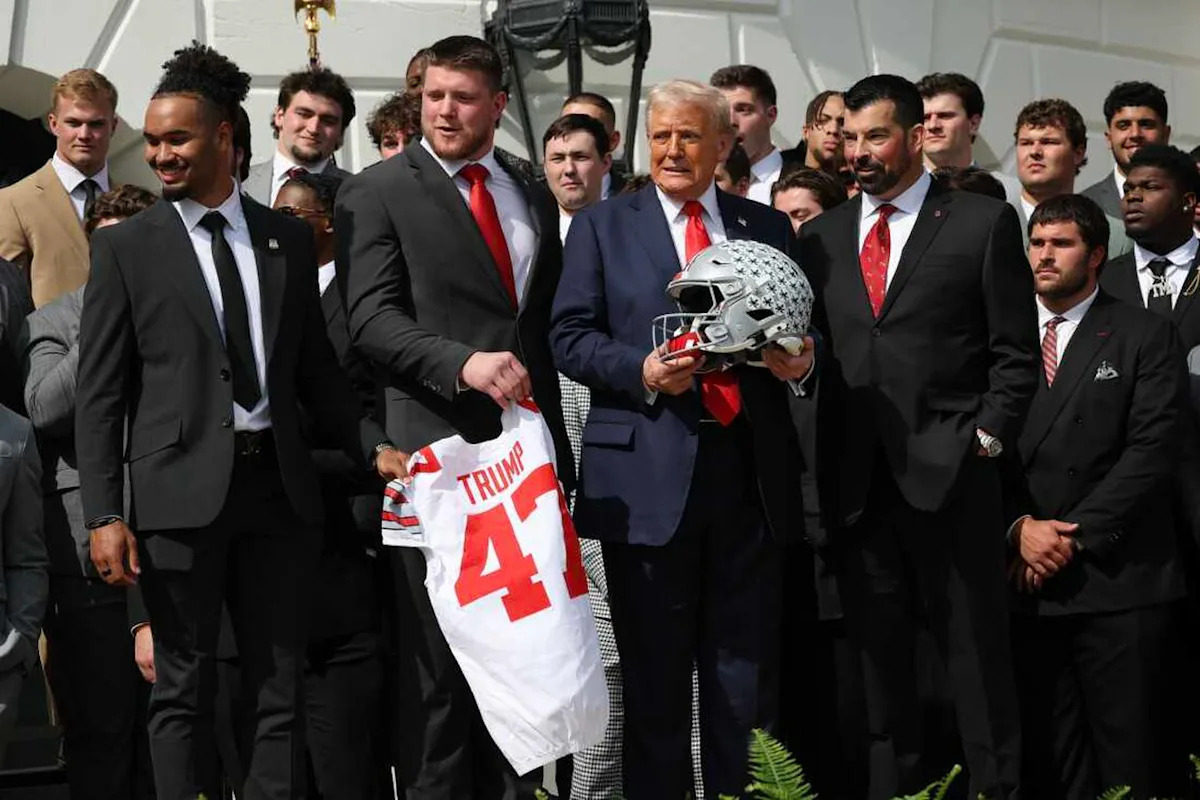
Trump’s Executive Order on College Sports Sparks NCAA, Mountain West, and More — With Support from Nick Saban
In a major development for college sports, President Donald Trump signed a sweeping executive order Thursday called “SAVING COLLEGE SPORTS,” sparking debate and raising awareness about issues related to name, image, and likeness (NIL), athlete pay, and the NCAA’s role.
Advertisement
While the immediate effects are mostly symbolic and not structural, its potential impacts on the NCAA—and on conference groups like the Mountain West—could be far-reaching.
The move comes amid growing national concern that college sports have become a “headless system,” now seen as “free agency,” with mega-collectives and multi-million-dollar payouts replacing tradition, loyalty, and balance.
While not the main focus here, Trump has spoken about this complaint many times in conversations with retired Alabama football coach Nick Saban, who met with the president earlier this month to discuss the declining state of college athletics.
According to sources familiar with their discussion, Saban told the president some hard truths about the unintended consequences of the NIL era, emphasizing that federal protection is crucial.
Advertisement
“We are losing what has made college sports special,” Saban reportedly said. “And without a national standard, the unfair imbalance will only worsen, and it will be the Olympic sports, non-revenue programs, and student-athletes at smaller schools who suffer most.”
After reviewing the executive order, Saban praised it, calling it “a step in the right direction.” He added that while legislative action will still be required, the president’s directive sends “a strong message that college athletics still have some integrity.”
Trump’s five-page order highlights this urgency. He criticizes recent court rulings and policy shifts that have caused bidding wars by boosters, large payments to players, and free transfers. “College sports is not, and should not be, professional sports,” the order states. “Without guardrails to curb the chaos… many college sports will likely cease to exist soon.”
Among the proposals in the order are:
– Protecting scholarships for non-revenue sports—requiring schools with large athletic budgets to increase or maintain scholarships for Olympic and women’s sports.
Advertisement
– Banning “pay-for-play” models—preventing booster collectives from offering athletes payment unrelated to commercial ventures,
– Clarifying athlete status—directing the Secretary of Labor and the National Labor Relations Board to confirm that athletes are students, not employees,
– Limiting legal risks for schools—advising that they be shielded from antitrust lawsuits that could threaten NCAA governance and transfer policies.
While Trump’s executive order does not have the power of federal law, it can put pressure on Congress members, especially now that the SCORE Act—an NCAA-friendly piece of legislation—is officially moving through Congress.
Advertisement
Senate leaders, including Ted Cruz, are involved in bipartisan talks to create a companion bill.
Effects on the Mountain West and the NCAA
For mid-major conferences like the Mountain West, the executive order offers both hope and concern.
There is hope because an executive order could support a quasi-policy to stabilize scholarship opportunities for non-revenue sports at schools like UNM, Utah State, and San Diego State.
The concern is that this hope comes with unpredictability because decisions can change, and the playing field will still be heavily skewed in favor of power conferences that can capitalize on NIL-driven disparities in strength.
Advertisement
The Mountain West has much smaller budgets—$50 to $60 million per sports program—and recruiting and keeping top talent will be especially difficult under current free-market conditions.
An executive order that limits unregulated booster interference to protect opportunities in non-revenue sports could be crucial for their survival—if subsequent actions make this possible.
Nevertheless, many experts, including NCAA President Charlie Baker, insist that there is no long-term solution without Congressional intervention. “You can’t fix this stuff from executive order,” Baker said on Thursday. “Our focus … has got to be the legislative process.”
However, as the saying goes in politics, just like in sports, momentum matters. Trump’s executive order, along with high-profile support from coaching legend Saban, could speed up legislative action on Capitol Hill.
Advertisement
When a sport urgently needs stability and reinforcement during rapid changes, that signal might be enough to cause a ripple effect.
As Purdue coach Barry Odom recently stated, “The game’s been here for a hundred years and it’s gonna be here for a hundred more.”
That might be true, but after this order and with prominent figures like Trump and Saban finally aligned, the game could begin to resemble what it once was.
All this being said, I think we can all agree that something needs to be done to address the issues in NCAA college sports and protect its original purpose for college athletes when competing at any university.
Advertisement
Ultimately, Trump’s executive order — along with voices like Nick Saban’s — could mark a turning point in a historically chaotic and often unchecked era of college sports.
The introduction of NIL and the transfer portal has brought positive changes for student-athletes, but perhaps the pendulum swung too far, too quickly.
Guardrails aren’t about limiting opportunity — they’re about ensuring fairness, preserving all sports, and restoring the balance that originally made college athletics special.
Therefore, this correction isn’t just warranted; it’s long overdue.
More from mwcconnection.com:
NIL
Confidence is high, coaches reveal at Big Ten football media days
While the Buckeyes went 4-0 in the College Football Playoff, they couldn’t beat Michigan, falling 13-10 for their fourth consecutive loss to the Wolverines. That result prompted Michigan defensive end Derrick Moore to cast shade on Ohio State’s accomplishment. “I’ll congratulate them on the win,” Moore said, “but you know it’s not no real win […]

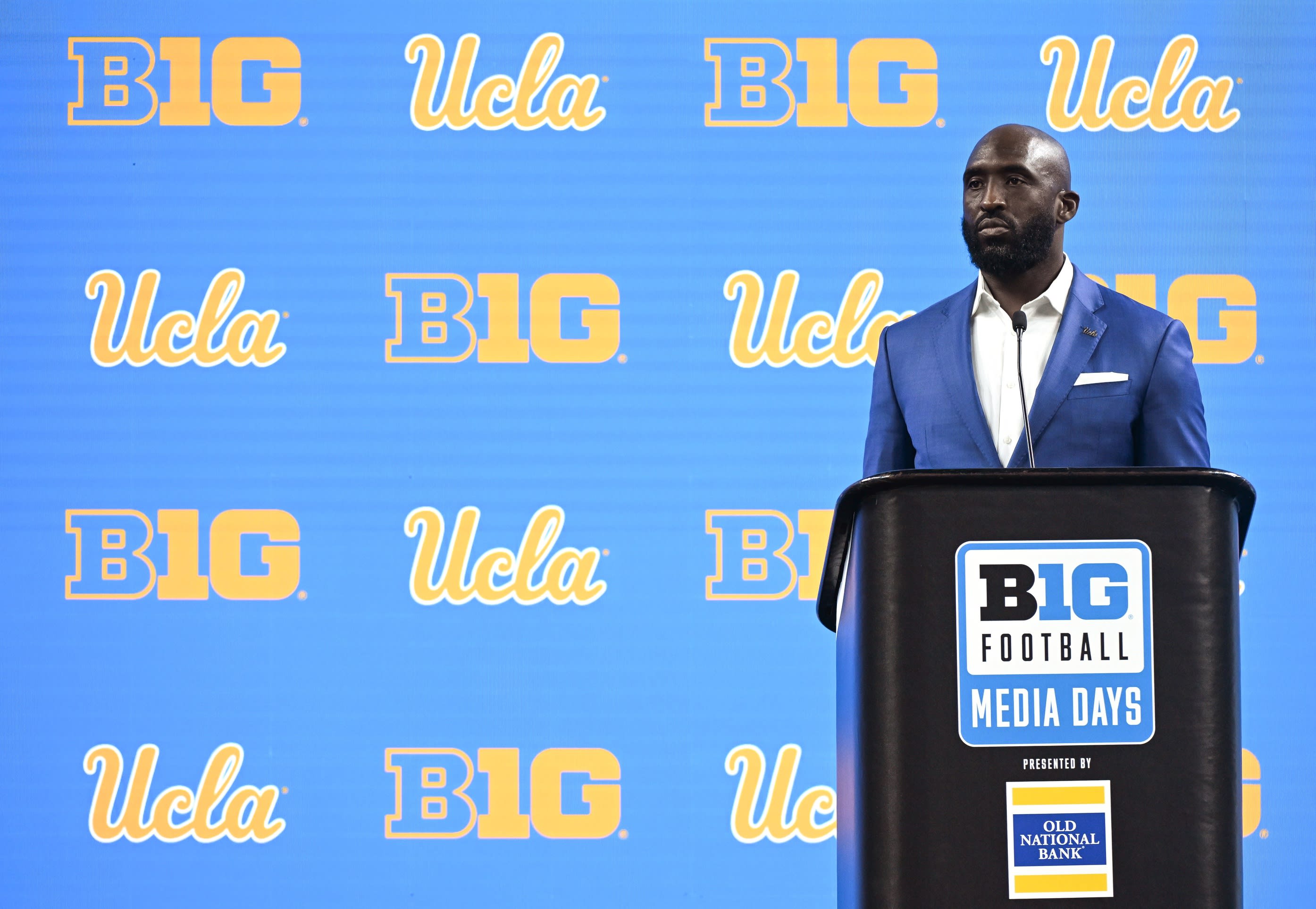
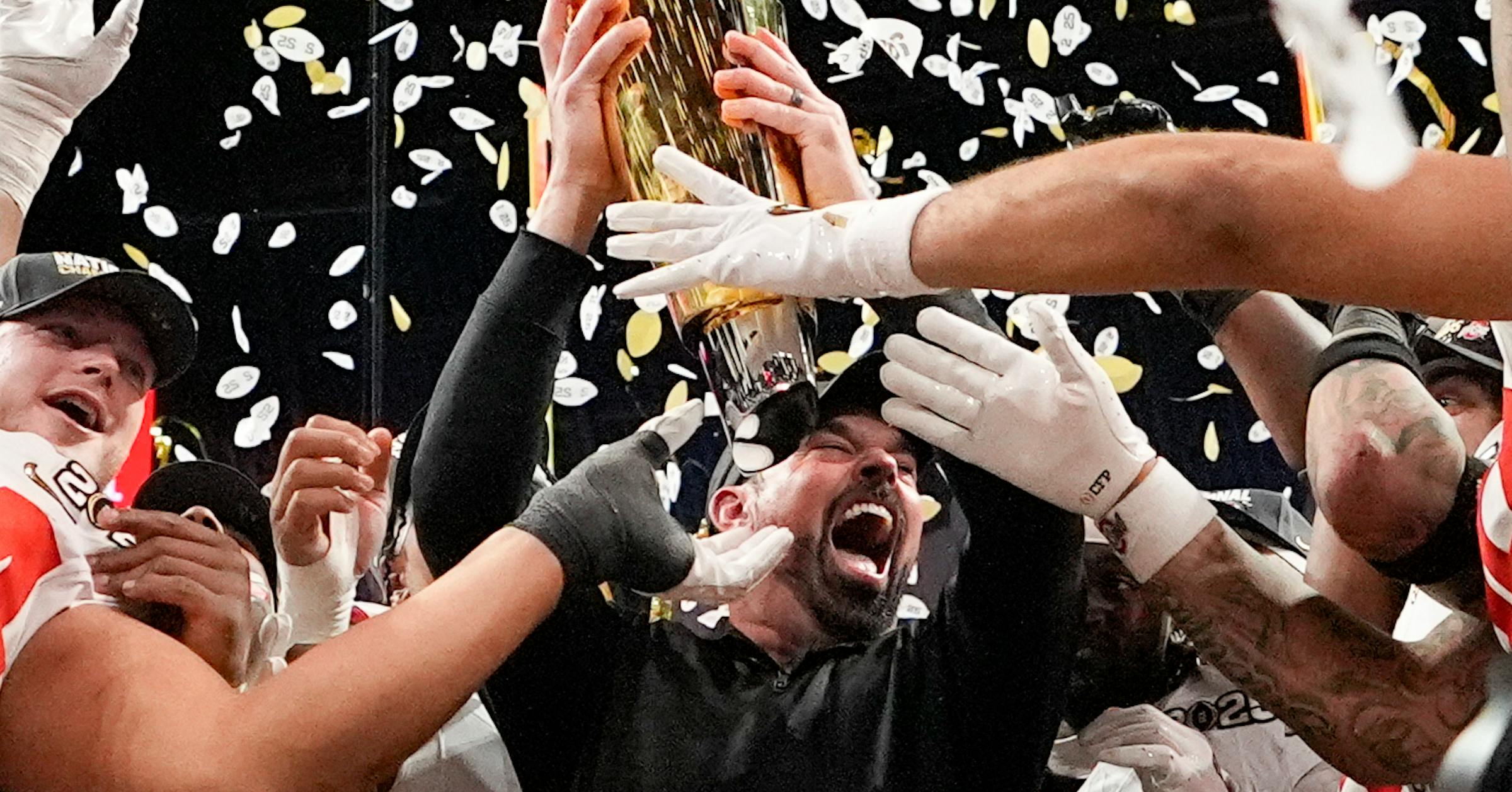
While the Buckeyes went 4-0 in the College Football Playoff, they couldn’t beat Michigan, falling 13-10 for their fourth consecutive loss to the Wolverines. That result prompted Michigan defensive end Derrick Moore to cast shade on Ohio State’s accomplishment.
“I’ll congratulate them on the win,” Moore said, “but you know it’s not no real win if y’all ain’t beat us.”
Illinois coach Bret Bielema had the leadoff spot at media days, and the shoot-from-the-hip former Iowa defensive end and Wisconsin coach didn’t hold back in describing the changes in college football brought on by the transfer portal, name, image and likeness payments and now, revenue-sharing from the House v. NCAA settlement.
“Now we have a system where starting in July, we actually paid our players through PayPal,” he said. “The world has changed. It’s just a different, different world. Absolutely awesome.”
Indiana coach Curt Cignetti showed off his brash side last year when he told skeptics, “I win. Google me.” On Tuesday, he bulled his neck again.
The Hoosiers are coming off a season for the ages, an 11-2 campaign in which they finished tied for second in the Big Ten and advanced to the College Football Playoff. A loss at Notre Dame ended Indiana’s season and empowered skeptics who had criticized a soft nonconference schedule. And when the Hoosiers canceled a 2027-28 series against Virginia and replaced it with games against Kennesaw State and Austin Peay, more howls came.
-

 College Sports2 weeks ago
College Sports2 weeks agoWhy a rising mid-major power with an NCAA Tournament team opted out of revenue-sharing — and advertised it
-

 Sports3 weeks ago
Sports3 weeks agoNew 'Bosch' spin
-

 Fashion2 weeks ago
Fashion2 weeks agoEA Sports College Football 26 review – They got us in the first half, not gonna lie
-
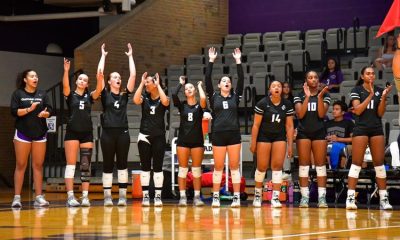
 Sports1 week ago
Sports1 week agoVolleyball Releases 2025 Schedule – Niagara University Athletics
-

 Health2 weeks ago
Health2 weeks agoCAREGD Trademark Hits the Streets for Mental Health Month
-

 Sports3 weeks ago
Sports3 weeks agoE.l.f Cosmetics Builds Sports Marketing Game Plan Toward Bigger Goals
-
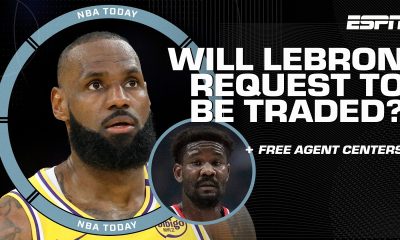
 Youtube3 weeks ago
Youtube3 weeks agoWill LeBron James request a trade? 🤔 Windy says MULTIPLE TEAMS would make offers 👀 | NBA Today
-

 Youtube2 weeks ago
Youtube2 weeks agoWill Giannis DEPART Milwaukee⁉️ + How signing Turner & waiving Dame impacts the Bucks | NBA Today
-

 College Sports2 weeks ago
College Sports2 weeks agoBuford DB Tyriq Green Commits to Georgia
-
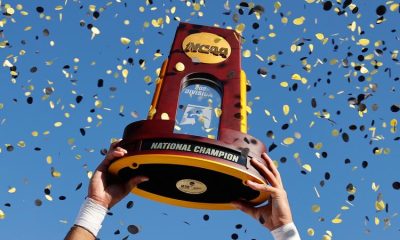
 Sports2 weeks ago
Sports2 weeks agoNew NCAA historical database provides wealth of information on championships


























